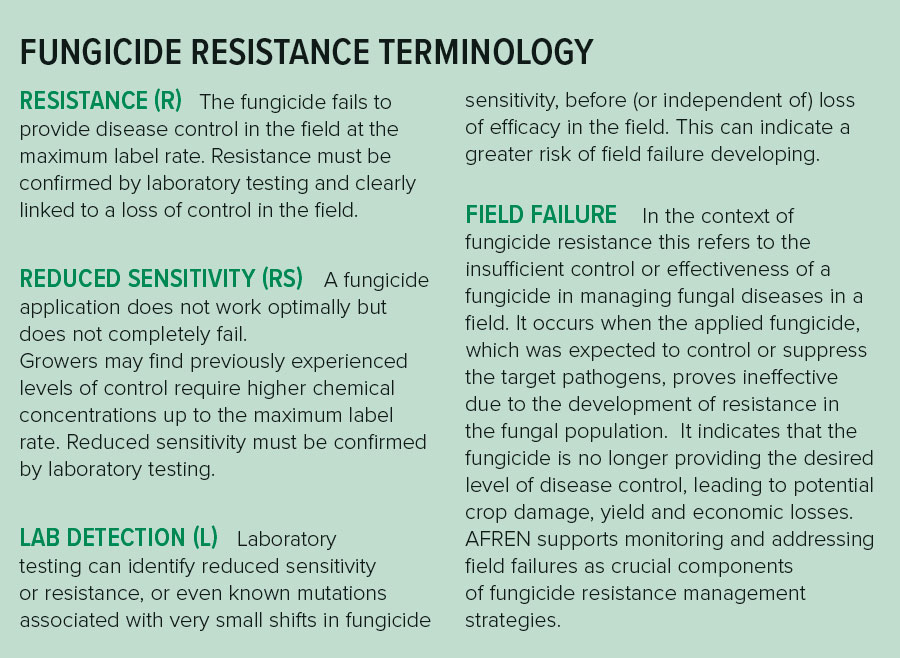Up-to-date fungicide resistance knowledge is key to managing the increasing number of crop diseases developing this resistance.
No cropping region or state in Australia is free from some degree of fungicide resistance – as reduced sensitivity to a fungicide, fully developed resistance, or both.
The cases of major concern include barley net blotches in South Australia and Western Australia, Septoria tritici blotch in the southern cropping region, and wheat powdery mildew across SA, New South Wales, Tasmania and Queensland.
Other examples exist and there are almost certainly pockets of resistant pathogen populations that are yet to be detected.

Fungicide resistance is an evolutionary process that builds up through the survival and spread of resistant fungi after repeated use of the same fungicide mode of action. Growers should consider all fungal crop diseases as having the potential to evolve reduced sensitivity and eventual resistance to the available fungicides.
By their very nature, single-site fungicides are more vulnerable to the natural mutations that endow pathogen individuals with reduced sensitivity or resistance.
If the mutant strain is selected through repeated applications of fungicides from the compromised mode of action group, it can come to dominate the pathogen population.
Table 1: Fungicide resistance of diseases across Australia as determined by laboratory tests and field observations, November 2023

Source: AFREN https://afren.com.au/
The Australian Fungicide Resistance Extension Network (AFREN), with support from GRDC, has been working to help growers and advisers to stay informed about the prevalence and management of fungicide resistance in their region since 2019.
AFREN advocates responsible fungicide management practices for controlling these naturally occurring resistant individuals within any pathogen population. Resistant fungi can spread widely through windborne spores and movement of infected seed, among other mechanisms, so responsible management might not indemnify one property if poor practices on a neighbouring farm have allowed a resistant strain to proliferate.
A district-wide commitment to discouraging fungicide resistance is recommended.
This includes:
- Discussing the issue as a community.
- Maintaining awareness of the risks, including prevalent diseases and frequently used fungicides.
- Monitoring disease pressure each season.
- Monitoring fungicide effectiveness and sharing information.
- Maintaining a commitment to responsible fungicide application and rotation practices.
- Prioritising agronomic methods to reduce disease pressure and minimise reliance on chemical controls, using the principles outlined in the AFREN Fungicide Resistance Five. (see article page XX of this Groundcover Supplement).
Fungicide resistance across Australia
Fungicide resistance is a concern for growers across Australia. Table 1 shows the diseases of particular concern in each state, as determined by laboratory tests and field observations.
Growers should always utilise the full suite of preventive and precautionary measures when managing any fungal disease. Extra care should be taken to mix and rotate fungicides if reduced sensitivity has been confirmed in the field or indicated by laboratory tests.
When planning a fungicide application, be mindful of any non-target pathogens that might be surviving on the stubble of a previous crop in the field, or co-existing with the target pathogen in the current crop. It can be very easy to select resistant strains by killing the susceptible pathogens in these small populations.
More information: Dr Anna-Sheree Krige, sheree.krige@curtin.edu.au

























































